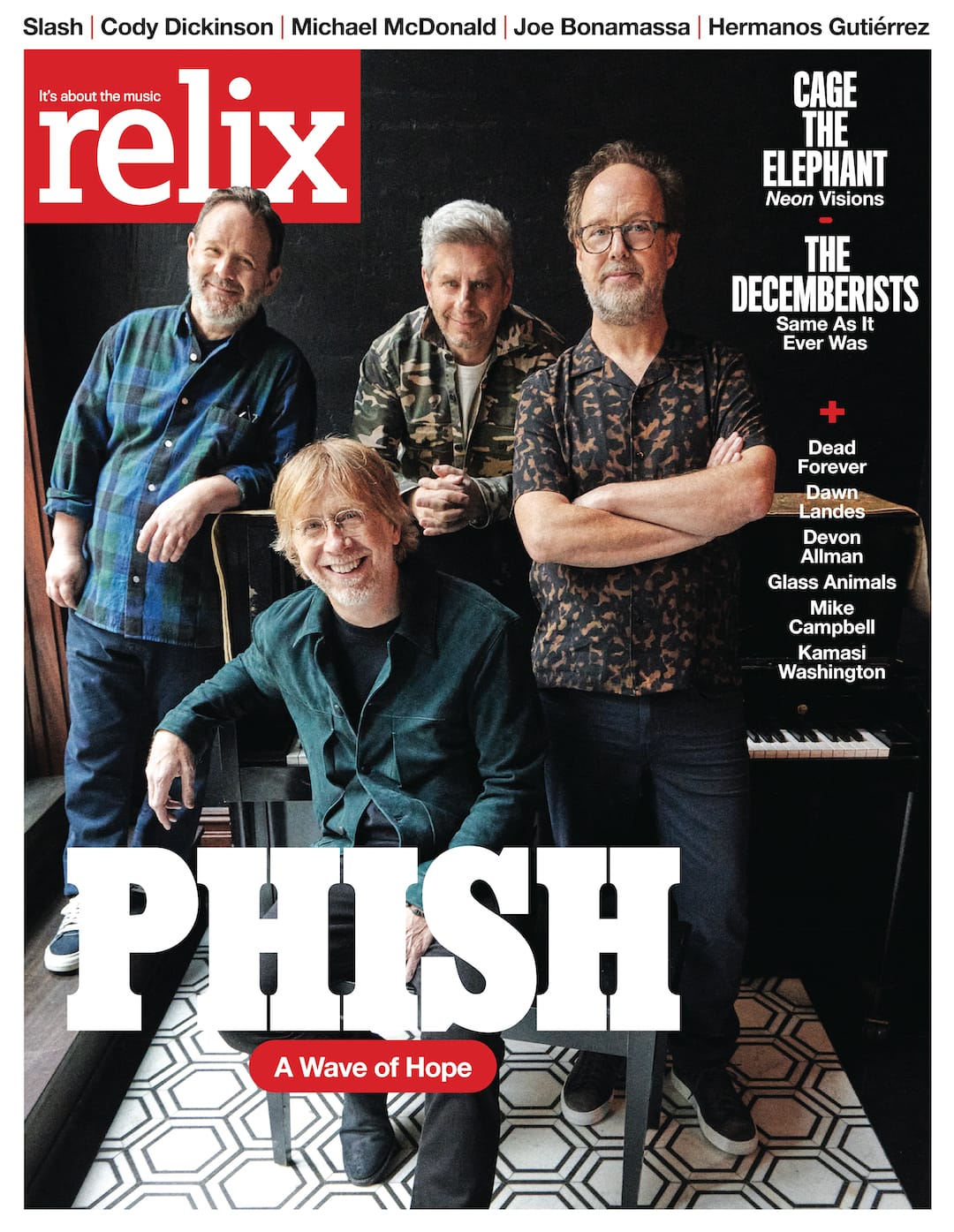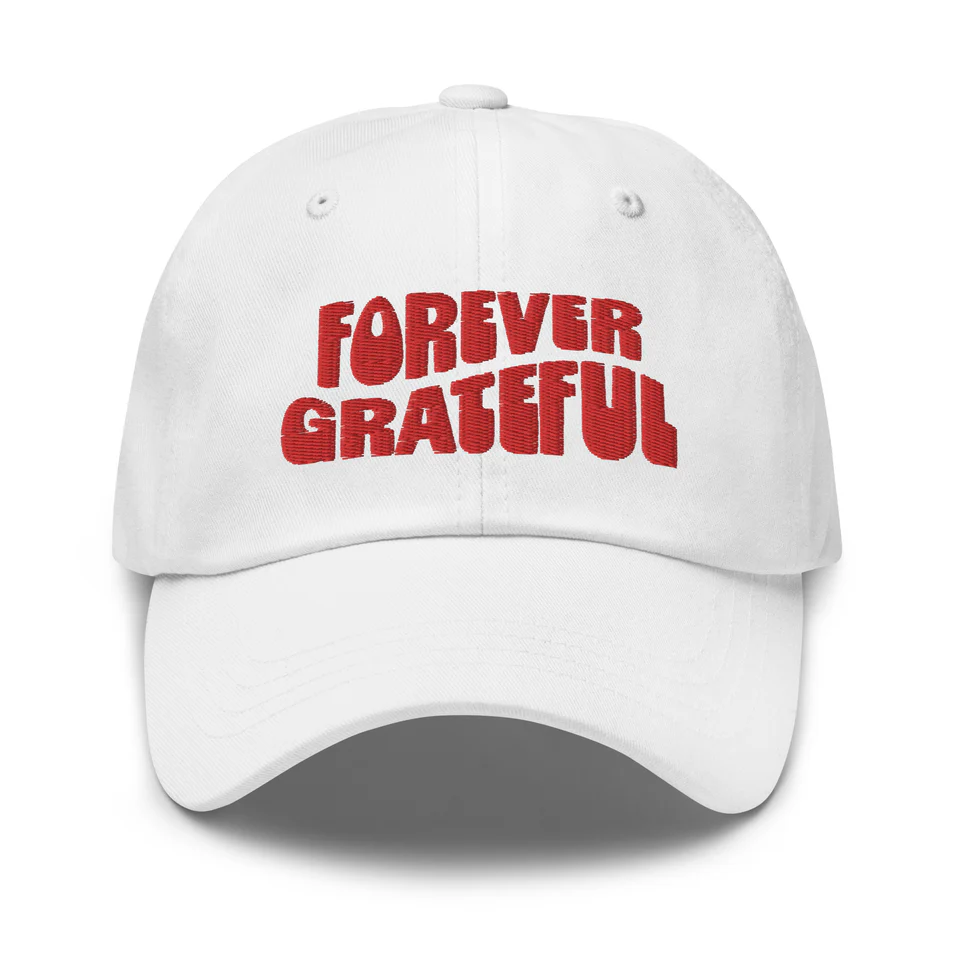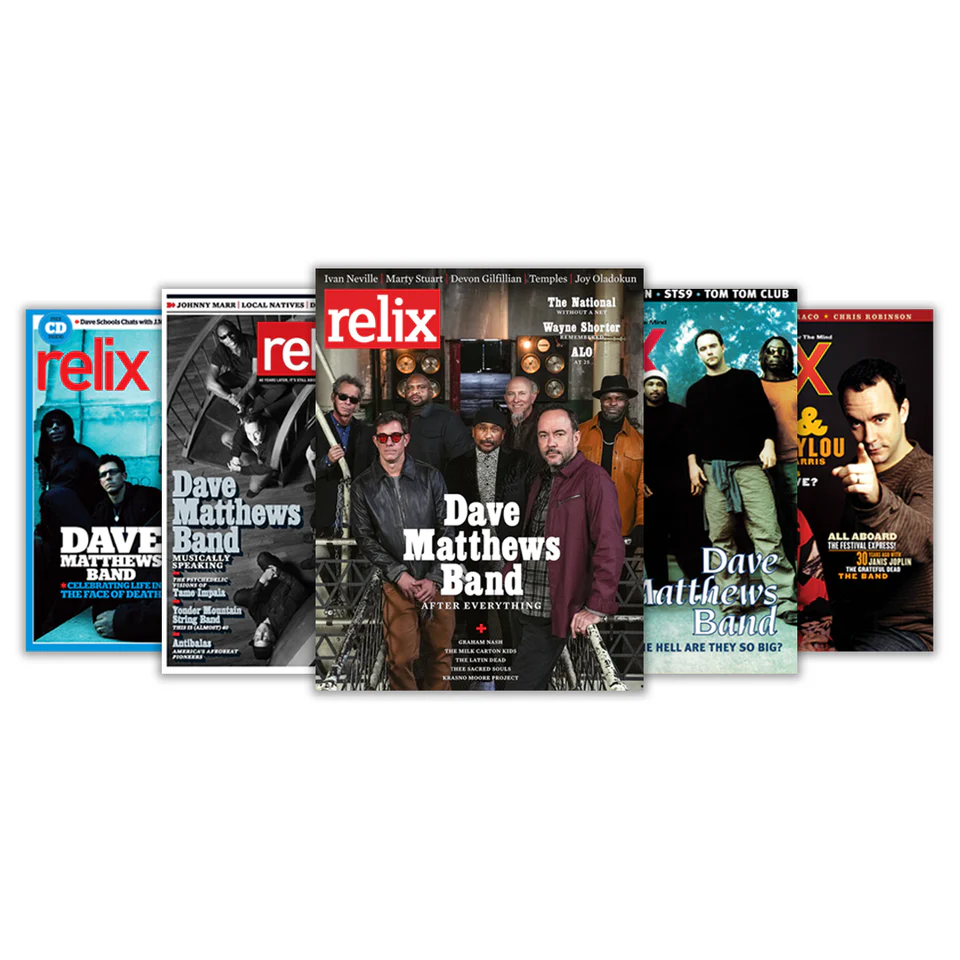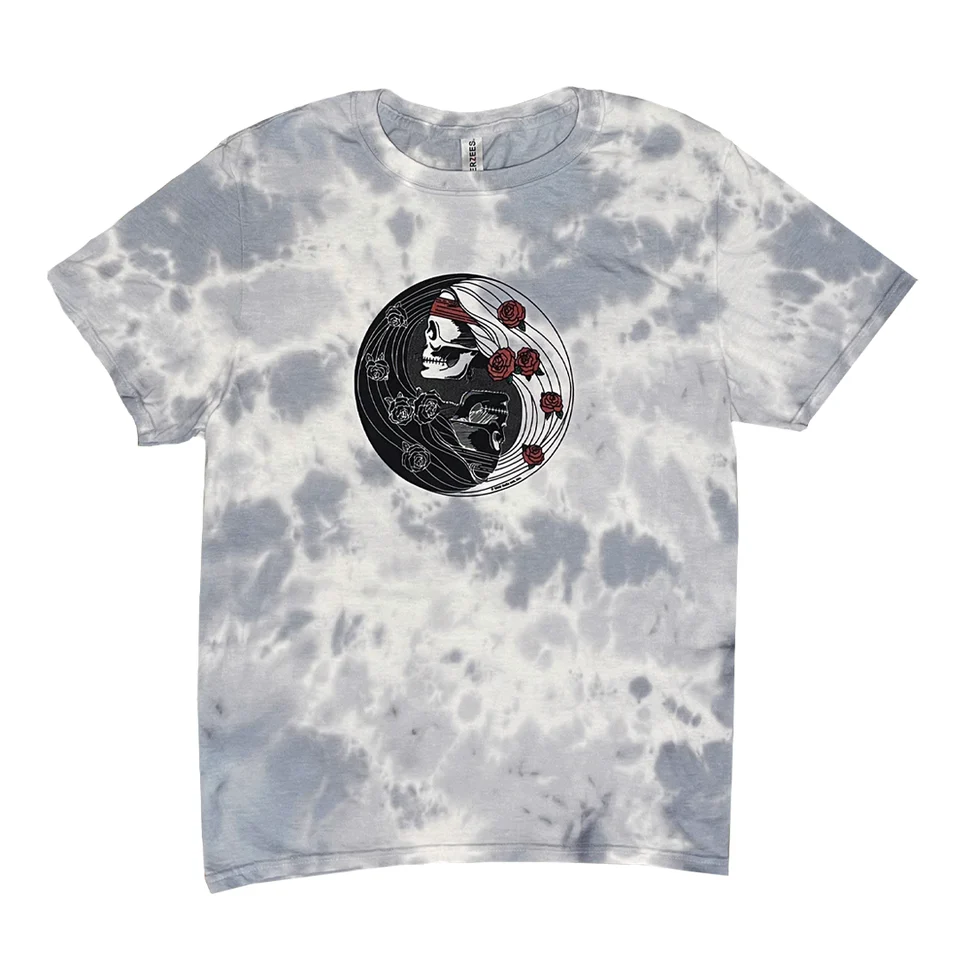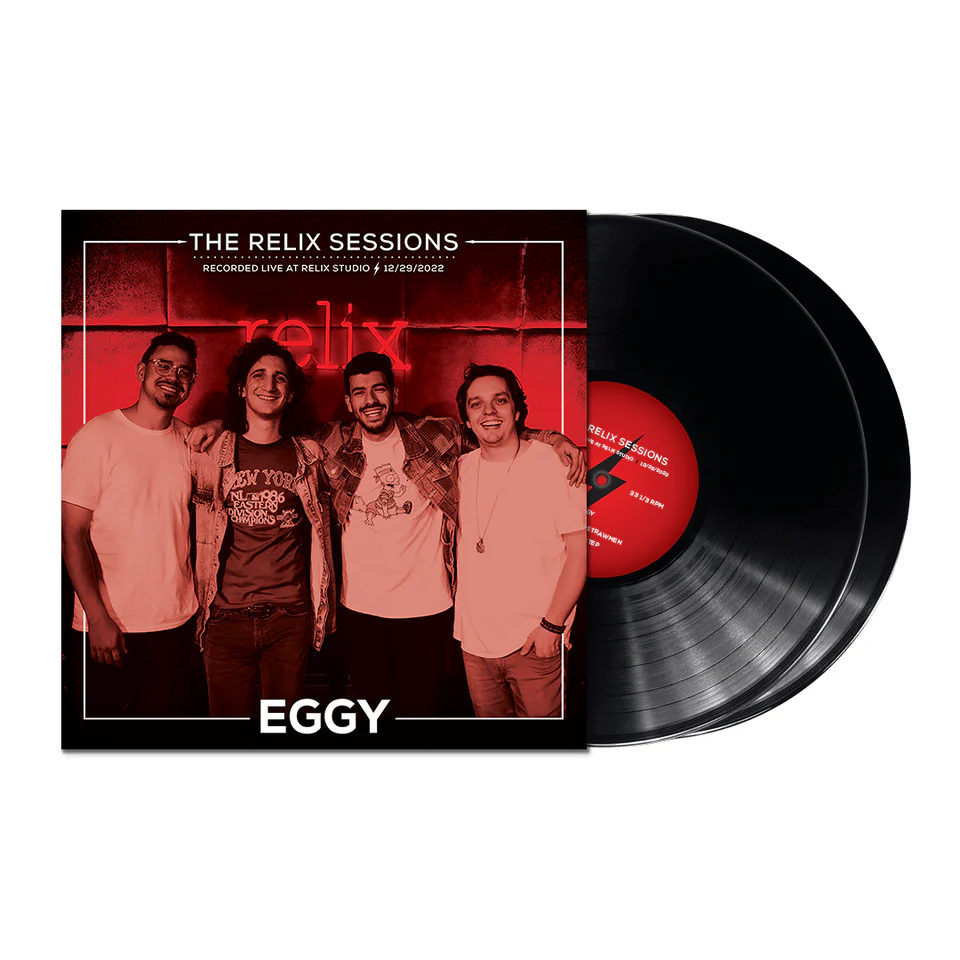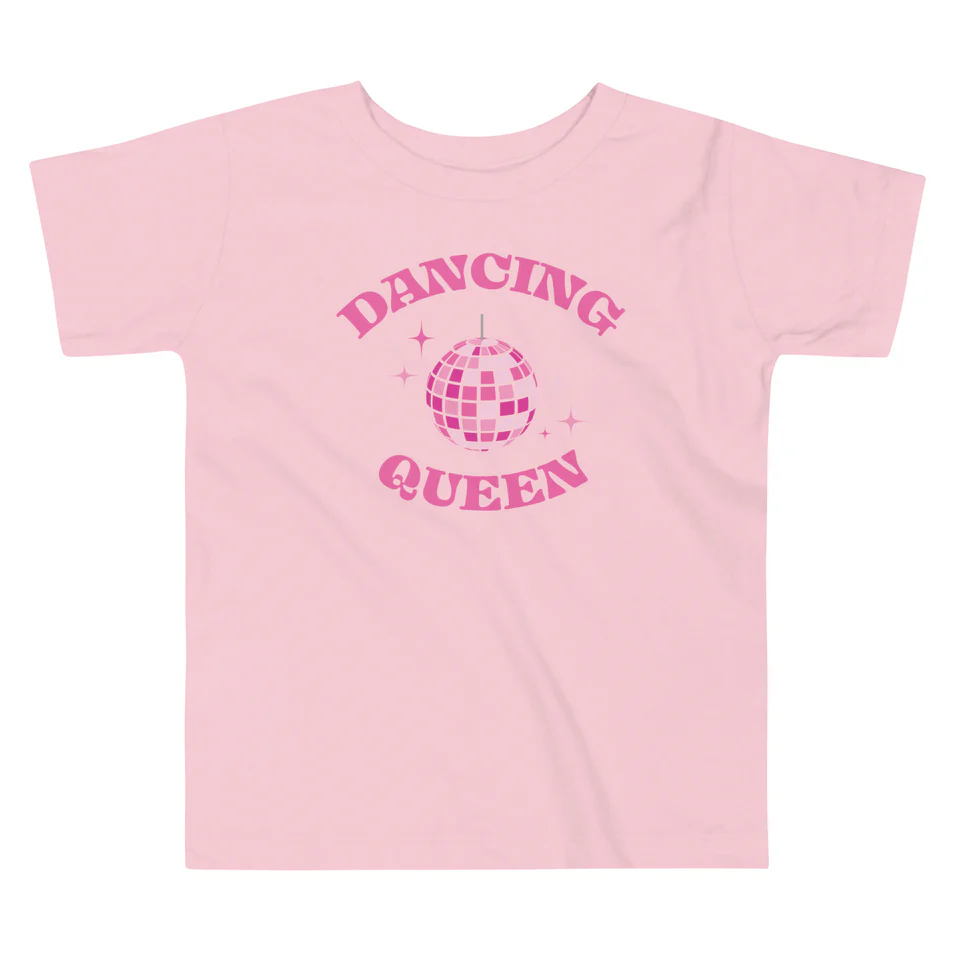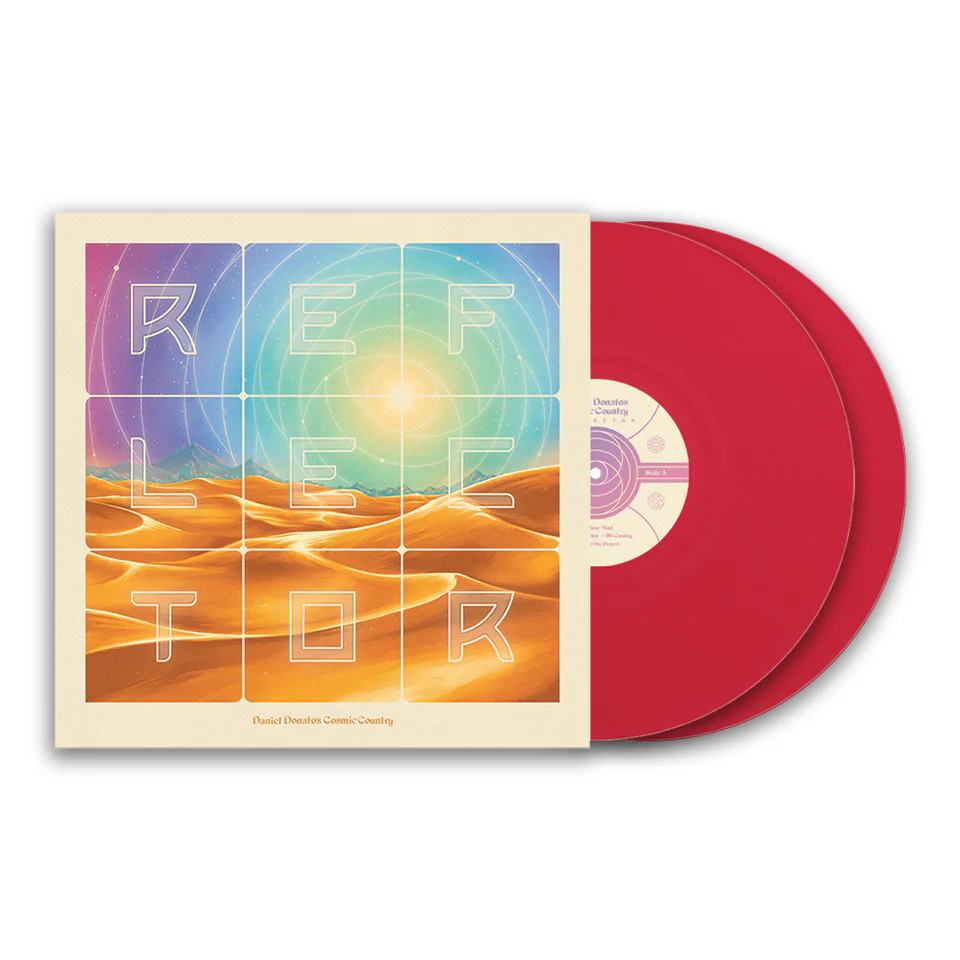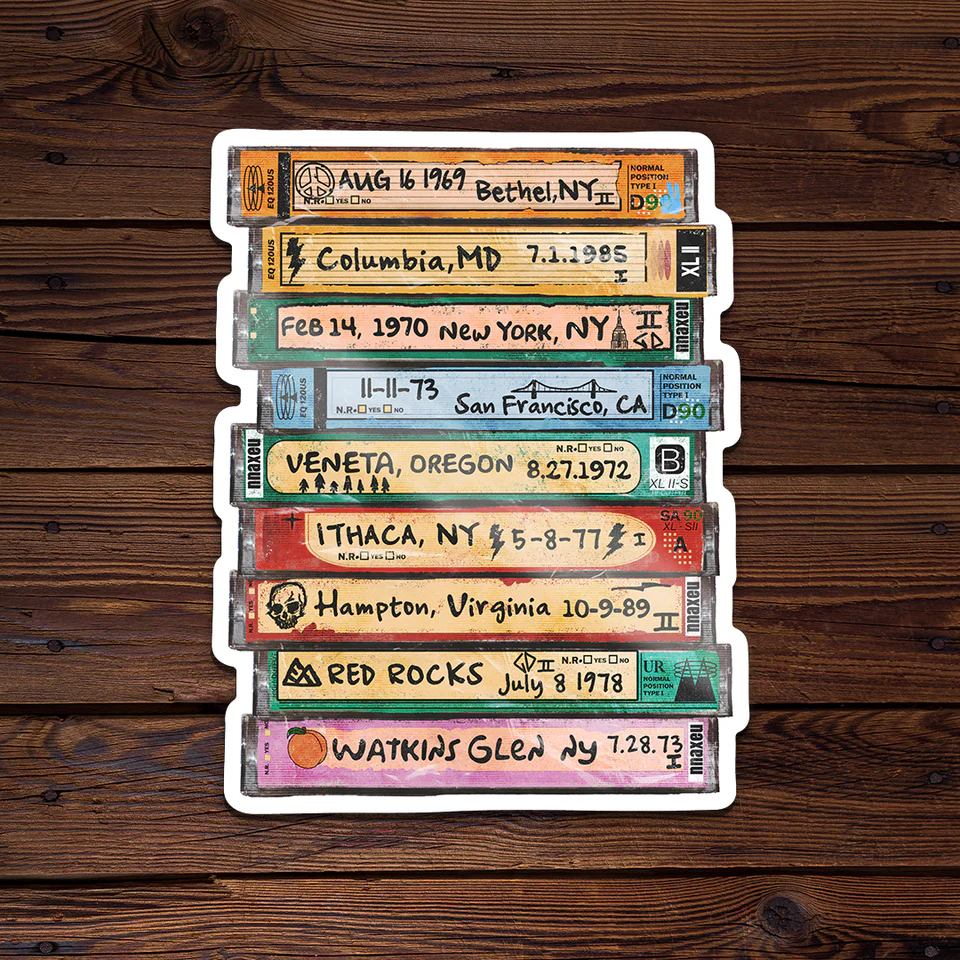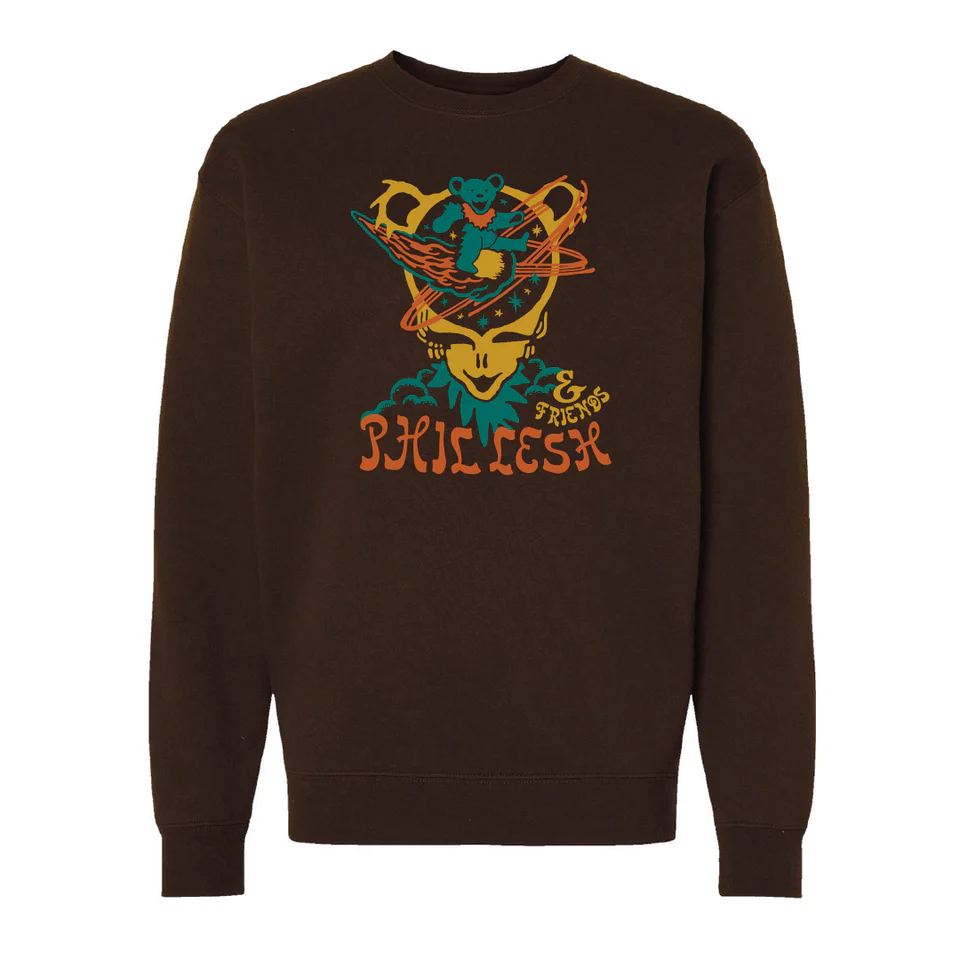Tariq “Black Thought” Trotter: After The Fire
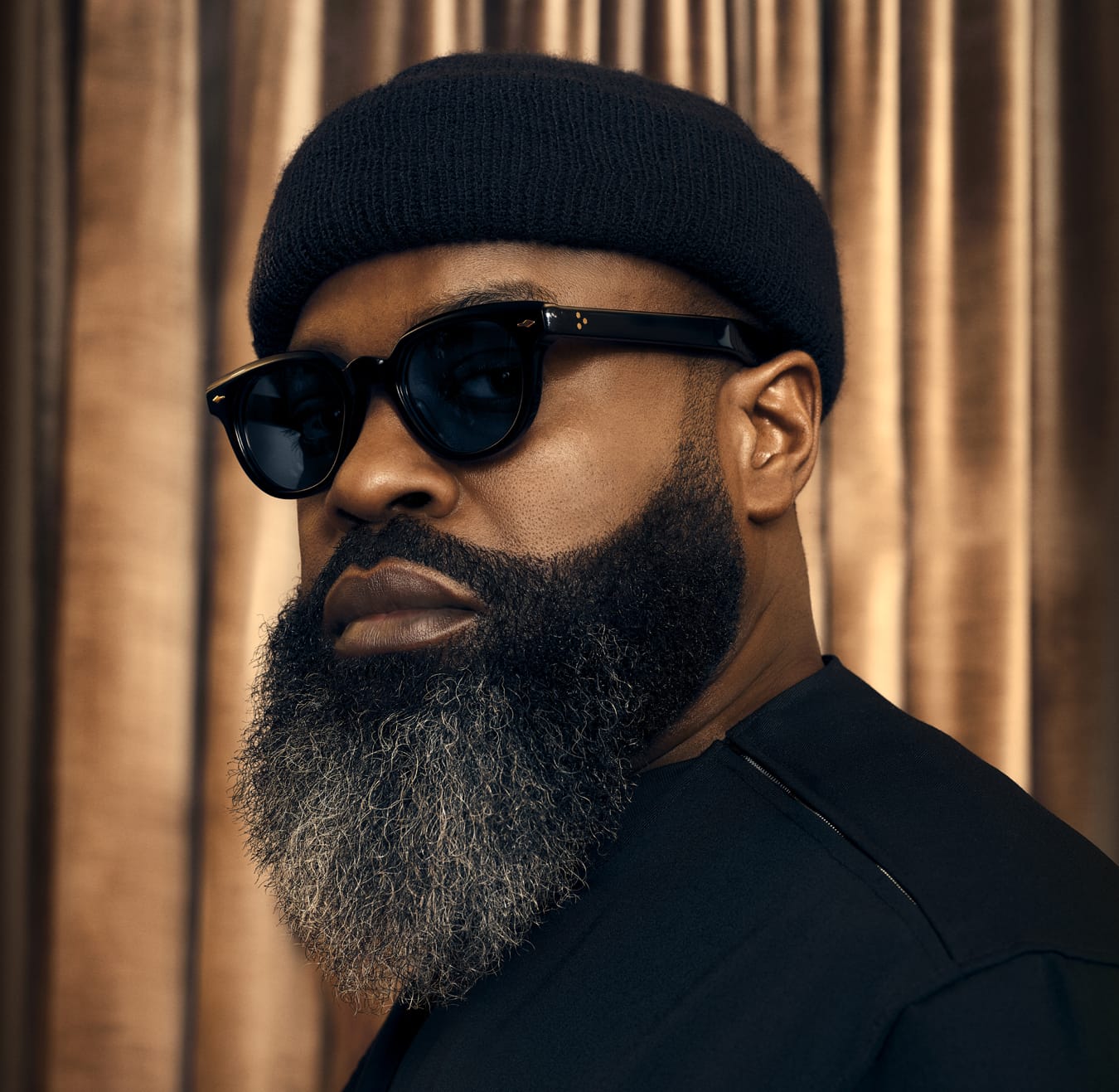
photo: Joshua Kissi
***
“The story of my life starts with the fire,” Tariq “Black Thought” Trotter writes in the opening chapter of his stirring new book, The Upcycled Self: A Memoir on the Art of Becoming Who We Are. Trotter, the co-founder and lead emcee of The Roots, continues, “A lot of people know I burned down my family’s home when I was six years old but are not aware of the magnitude of that moment—and all that began to unravel after it. That, I have never spoken of publicly, rarely even to those closest to me.”
Trotter’s life took a dramatic turn while playing with army men in the Philadelphia row house he shared with his mother and half-brother. (His father had been murdered years earlier.) He was using a lighter to enhance the action, and when it became too hot, he tossed it away, prompting an immediate conflagration after it struck the drapes.
The Upcycled Self is a coming of age story featuring a protagonist who attains transformative knowledge while still in elementary school. It depicts Trotter’s life as a latchkey kid taking a job as a second grader with the optician whose office he’d pass most every day. The book chronicles the personal challenges Trotter faces at home, as his mother eventually succumbs to drug addiction, while he achieves elevation through his efforts as a visual artist. Eventually, Trotter’s aptitude gains him admission to the Philadelphia High School for Creative and Performing Arts where he also explores an interest in music. He soon befriends Ahmir “Questlove” Thompson, and although their upbringings vary, the two become companions, confidants and collaborators.
Trotter offers an eloquent expression of the artist’s journey, while tracing his own upcycle, a process by which “you apply the wisdom to recognize what you need to leave in the past and what you need to adapt in order to move forward in a different way.”
After avoiding certain topics in public settings for so long, what finally led you to address them in this book?
It’s the sort of thing where I had always wanted to become more personal in my storytelling. The way that The Roots collective was sort of structured, the way we’ve built it out, I’ve never felt like there was the space for me to make The Roots as much about me.
I’ve been waiting for the right opportunity—the point at which it felt most natural and the lightest lift—because it’s huge for me to talk about myself in any way, shape or form. I haven’t really built my career on that style of writing. You have to incorporate the machismo, braggadocio, winner-takes-all perspective into the bigger picture, but it’s never been what I led with.
So it was a bit of a challenge to get myself to a point where I felt comfortable telling any part of my story. I think what first helped me arrive at that comfortability was a keynote speech I did for some young advertising executives. It was something in New York City called Where Are All the Black People? It was for young Black people who are emerging in the advertising and marketing space. Even though that’s not the space that I moved within, I’m familiar with it from having to promote all my projects. In that speech, I talked about getting out of one’s own way, getting out of your comfort zone, forcing yourself to use different muscles and different parts of your brain. Then after talking with folks about how it resonated with them, I realized that I could take a page out of my own book in that sense. I wasn’t necessarily practicing what I was preaching.
In recent years, beyond your work with The Roots you’ve created the Streams of Thought series of solo releases. Were those entwined in some way with the process that informed the book?
I think about the passing of Richard Nichols, our longtime manager and mentor. That was the beginning of another period of uncertainty to a certain extent in our trajectory—we felt like we had it figured out, and then this unforeseeable tragedy was thrust upon us. [Nichols died in 2014 after a long struggle with leukemia.]
That was some time ago, but there hasn’t been a Roots album since then. It definitely changed the way we thought and felt and moved as a unit. I think that was the beginning of me looking for different ways to continue to tell my story because I’ve never drawn from a different place or any different experiences. My life is my life, but I’ve always been more selective about certain topics that I would glaze over and the stuff that I would dive deeper into.
You also spent time writing songs and performing in Black No More, the musical adaptation of the George S. Schuyler book. Did that impact this larger transformation in some way?
I think so. I think part of what I gained in working on Black No More was a different sort of dexterity. I think the challenge in having to write for different voices in non-hip-hop genres of music and being so specific in my catering to the voices of the other members of the company—the other performers—made it easier to tell my own story from my perspective and voice.
When you get used to telling stories, then storytelling becomes easier. I think that transcends format and genre. So having to get out of my own way to engage in my storytelling in the musical theater space definitely informed the way I work as an author and as a musician. I’ve been looking for the perfect storm of planets and stars to be in alignment to find the most efficient voice because I have all these different voices—all these different platforms and all these different means through which to speak in order to convey the ways that I feel. But sometimes one is more articulate or more effective than the others.
At what point did you come up with the title The Upcycled Self, and did that play any role in crafting the narrative?
I had the title first. When I came up with the idea for a book—“I’m going to do this linear sort of biographical thing”—I decided that it was going to be called The Upcycled Self before I even knew why. Over time, the true purpose revealed itself. It was so daunting and intimidating for me to approach a project like, “I’m writing my memoir.” I didn’t go into this process thinking that. I looked at writing this book as a different kind of project. I think that may have enabled me to think about how intimate, vulnerable, personal, accessible and open I had to be in the process. I think that’s what helped to guide it.
Initially, I didn’t know how to envision it, but I consulted with some of my friends who are more experienced authors. I correspond with Ta-Nehisi Coates quite often while he works on his various projects. We have an interesting relationship because he’ll credit a lot of the inspiration for his writing style to my style of storytelling as an emcee. So I started to explore ways that I could open myself to receive the same sort of influence. I would speak to him during the process, not to mimic him, but to find out how he gets it out. At the end of the day—through the whiteboarding of it all, the Post-it notes of it all—I found myself working almost from the inside out in a way, not unlike the process of working on an album or a mix tape.
Do you think your aptitude as a visual artist manifested itself in this form?
Once you have acquired the perspective of an artist and you experience the world through a creative lens, it’s not the sort of thing that leaves you. It has that sort of effect on the way you view the world forever. So there’s that, and I think it transcends medium.
Sometimes we find ourselves almost having reached a level of technical mastery with regard to the amount of time invested in a thing. It’s not like I get bored with something, but I’ve never wanted to become complacent, and I’ve never wanted the feeling of having conquered a thing without having something else to move on to. I’ve always pursued a creative progression in that way.
The way that I’ve seemed to control that trajectory is by compartmentalizing what I do, focusing on one thing at a time but always keeping multiple irons in the fire, multiple plates spinning. So whenever it’s time to work on my next thing, it’s already underway.
Going back to your initial question as far as the inspiration to tell this story and why, I would also speak to my friend Titus Kaphar, who’s an artist. He’s a painter. He’s recently progressed into working as a writer and director. He’s just a storyteller.
He directed a short called Shut Up and Paint that spoke to artists—the challenges that they meet when posed with having to separate the message from their art and when and why one would ever do so or not. So he looks into that. It was shortlisted for an Academy Award.
Then, most recently, he has a film coming out soon that is his autobiography, of sorts. It’s called Exhibiting Forgiveness, but it doesn’t focus on his career as an artist. It doesn’t focus on any of the awards he’s won. It’s about his youth and the relationship between him and his father and his family. He’s a friend, so him sort of peeling back the layers of the onion that he needed to peel back in order to tell his story served as an inspiration too.
Your work ethic was already in full evidence at age 7 when you took your first after-school job. As you looked back on that aspect of life while writing the book, how did it strike you?
What it is, is that I’m a hustler. I’ve been a hustler since I was a young person. I have experienced many points in my life where I could either become self-sufficient and evolve or not. It was sink or swim. There were points when I’d been in the mud for so long that I had to grow gills.
I really appreciate that about my life and about my experience. It was something that I normalized as a young person. I felt like this is just what people do. As you grow as an adult and interact with different folks, you realize, “Wow, this isn’t everyone’s experience.” But for me, that was all I knew. It was like you either have to go out and get it or go without, do without.
I was very cautious and very careful in the ways in which I went out to get it because I’d seen so many friends, so many family members, so many neighbors meet their end in doing so.
A number of your contemporaries at CAPA have achieved global success. Back when you were fellow students, did it feel like you were all just talented high school kids or did you have a sense there might be something larger at play?
For me, as a visual artist, I was at a crossroads. I knew there was no doubt in my mind that I was going to be an artist for the rest of my life—that’s how I was going to feed my family. But I had no idea how. Getting into that high school presented almost every option. I had commercial and graphic arts classes. I had fine arts classes— drawing, painting, sculpting, ceramics and all of the above.
But there was something very tangible in the air in the environment of that school, which was Philadelphia’s version of [New York City’s] LaGuardia High that made me pay attention to the music department and the musicianship that existed within those young people. I think if you were there at that moment in time, it’s something that we took for granted. It was just what we did.
But I think we had hit a stride at that time in that school. I would hurry up and finish my art assignments so I could go and sit in on the theater arts or with these musicians. I always run down the list—Joey DeFrancesco, Christian McBride, Questlove, Boyz II Men, Amel Larrieux, Fatin Dantzler. It’s a long list. At least 15 of my classmates in ninth and tenth grade have gone on to greatness as musicians and were already being recognized while we were still in school together. So that was a huge confidence builder. Talk about representation and being able to see oneself in a space—there were all these spaces that seemed impenetrable when I was in seventh or eighth grade, that two years later felt very achievable if I worked hard. I could look at this person, that person and this other person I knew who had done it.
There’s a moment where you briefly relocate to Detroit on short notice and Ahmir says to you: “This thing of ours that we’re working on—do you want to keep doing it? I’m down to keep going, near or far.” Did that feel like a heavy commitment in the moment?
It didn’t feel heavy. Ahmir and I have had these moments when we’ve had a seismic shift—sort of the end of an era, the beginning of an era, any watershed, monumental moment—where we just share a very subtle reaction. He’ll look at me and say, “Well, Tariq?” and I’ll look at him and say, “Well, Ahmir?”
It’s this old-school, Abbott and Costello sort of thing that he and I have. That’s how we acknowledge those moments. But on the day, it never feels as meaningful as it does in retrospect.
When his first book, Mo’ Meta Blues, came out, it opened with “…well Tariq?” Did you take that as a form of encouragement to tell your own story?
I think subtly. I don’t know that he’s even as conscious of this in real-time, but every time he puts out a new book, and the fact that he’s able to cover such an expansive range of material, it’s definitely a confidence builder. It’s reassuring, encouraging and inspiring on so many different levels to me.
It’s the continuation of that whole thing as a young person having so many friends and classmates go onto greatness. There’s nothing that Ahmir has ever set his mind to that he hasn’t achieved. He hasn’t had to tell me that it is also applicable to my life because he’s led by that example.
It’s just dope to have that example of him going on to become a college professor and to become an author and to have this presence in a culinary space—and to expand into so many different realms of fashion and the arts that I’ve always had interest in but was less confident, less motivated, to step into.
We’re cut from the same cloth and I believe that anything Questlove can achieve, I can definitely do.
One of the many things you’ve done together was the Black Lily residency at New York City’s Wetlands Preserve. What are your memories of that?
Thinking back on the moment in time, the Wetlands residency represented our arrival to New York City in a real way. Before then, we were almost on the outside looking in. We commuted from Philadelphia to and fro. We would sort of see and conquer, then return down the turnpike.
With the Wetlands residency, we acquired a piece of property. Actually, it was more like we leased it—we rented a space, so that we had a headquarters in New York City. Even though we still had to head up and down the turnpike to shuttle our artists back and forth, it felt like this was serving a greater purpose.
What happened at the Wetlands, though—shout out to Pete Shapiro for being a young, New York City visionary—is that he provided us with the opportunity to build, to create a platform in Philadelphia from New York City. There was no scene in Philly, no outlet, no avenue for artists to break—we created one initially through our buzz in Europe. But then, ultimately, we created a presence in New York City that we brought to Philly.
We started the Black Lily because the events at the Wetlands had gotten so popular that it wasn’t only for emerging artists anymore—established artists would be showing up just to get a chance to rock. This one night—it may have been the last night before we decided to change the dynamic—Big L performed and it was one of his last performances. Sadly, he lost his life a few days later. I also recall Lord Jamar from Brand Nubian—who brought Big L that night—was there and performed, along with Jeru the Damaja, Common, Canibus, Buckshot, Boot Camp Clik, and then the whole Roots regular cast of characters. This particular evening in what would be a two-and-a-half hour, three-hour event, was so testosterone-fueled and just so masculine in its nature that there were only men who got to rock that night.
That was when the decision was made to continue to sort of carve that lane but to create an opportunity for more female artists, more artists other than those who identified as masculine, to shine. That’s where the Black Lily came from. From there, we decided to find a venue in Philly to continue what we created in New York. That was the Five Spot in Philadelphia until it burned down.
You received a 2024 Best Rap Performance Grammy nomination for “Love Letter,” your spoken-word ode to 50 years of hip-hop. How do you strike a creative balance in your art between honoring the past and remaining in the present?
I think what it boils down to is an observation, an honor, a respect for the foundation—the primary colors, so to speak. You think about the primary colors. There are so many variations of each color and so many combinations of those colors. But everything, ultimately, is derivative of those primary colors.
So in whatever I do, I incorporate my favorite artists who represent my primary colors. They are Big Daddy Kane, Kool G Rap, Rakim, Chuck D, KRS-One and LL Cool J. As long as what I’m doing upholds, honors and respects the legacy that they built as emcees, storytellers and lyricists, then I feel like I’m good. That’s my metric. That’s my barometer.



